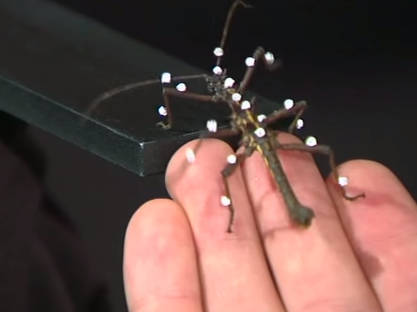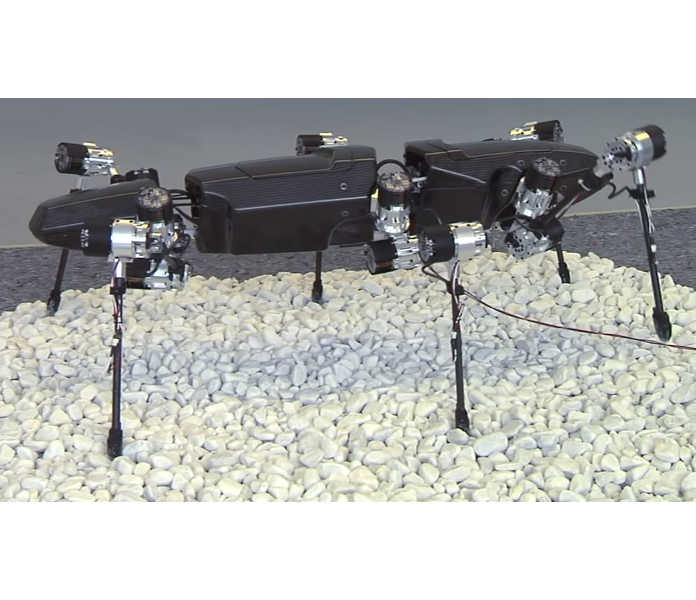| Hector The Robot Stick Insect |
| Written by Mike James | |||
| Sunday, 04 January 2015 | |||
|
Robots come in all shapes and sizes, but there is something fascinating about six-legged walking machines. Hector, the six-legged stick insect, is also interesting because each leg has a degree of autonomy. Obviously six-legged walking is going to be more stable than, say, two- or three-legged walking and Hector, currently under development at Bielefeld University, is a platform designed to find ways to walk like a real stick insect
To find out their natural gait, stick insects were placed on a treadmill complete with motion capture. The results were then transferred to Hector. This robot has six legs with custom-built motors and electronics in each of the 18 joints. Typically the robot walks by moving three legs at a time leaving a tripod of legs to support the main body. Each leg moves according to a set of simple rules and each can modify its movement in mid-flight to avoid obstacles. Each leg passes only minimal information about its current movement and the whole control system is modeled on a biological equivalent. The leg motor senses the effort needed to move the leg and hence detects when it impacts an obstacle. Insect-derived reflexes then cause the leg to modify its movement. This coupled with the ability to raise each leg to a different height makes it possible to walk over rough terrain while keeping the main body reasonably level.
If you would like to see, among other things, the stick insects walking on the treadmill, check out the next video in German:
More InformationDesigning a multi-legged robot as a test-bed for motion intelligence mechanisms Related ArticlesThe Amazing Dr Guero And His Walking Robots The Snake Robot Arm Gets Everywhere
To be informed about new articles on I Programmer, install the I Programmer Toolbar, subscribe to the RSS feed, follow us on, Twitter, Facebook, Google+ or Linkedin, or sign up for our weekly newsletter.
Comments
or email your comment to: comments@i-programmer.info
|
|||
| Last Updated ( Sunday, 04 January 2015 ) |



